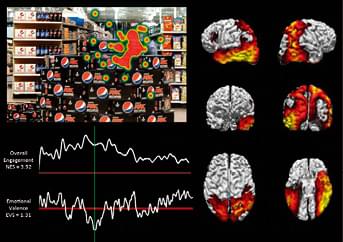2012 Shopper Engagement Study – part 1
Recession, unemployment and frequently changing economic conditions force the majority of FMCG buyers in the USA to economise. When it comes to making shopping decisions, 76 percent have been measured to be making these decisions in-store. Chicago-based POPAI (The Point of Purchase Advertising International), the global organisation of the marketing at retail industry, places great emphasis on researching changing consumption habits.
Their latest study is titled ‘2012 Shopper Engagement Study’ and was made using both traditional and modern methods and technology: personal interviews, eye tracking and EEG-based neuromarketing. The study consisted of two research modules: 2,400 shoppers were interviewed and 210 shoppers were wearing eye tracking glasses combined with electroencephalography (EEG) devices. POPAI president Richard Winter told that the research defined 5 key factors, which in-store and shopper marketing experts can use when making their development plans. Shopping route, in-store, in-home and in-market effects are more and more frequently analysed. Mr Winter added that despite the fact that a growing number of events of the shopping activity take place outside of shops, the importance of stores is becoming bigger than ever before. Today’s shoppers are knowledgeable about products but they also use the in-store marketing and brand messages when making their shopping decisions. As a result, the highest-ever ratio, 76 percent of shoppers was measured to be making these decision in-store. Women and the 35-44 age group are most likely to make shopping decisions on the spot, while individuals in the 65+ age group stick to their plans the most. This ratio is one of the most reliable indicators, as the study compared shopper decisions made in advance with what people actually purchased.
Related news
Related news
Crowds return to stores: margin cap and year-end preparations drive retail traffic
🎧 Hallgasd a cikket: Lejátszás Szünet Folytatás Leállítás Nyelv: Auto…
Read more >The second big rush in department stores comes between the two holidays
🎧 Hallgasd a cikket: Lejátszás Szünet Folytatás Leállítás Nyelv: Auto…
Read more >Pensioner food vouchers can be redeemed until December 31st
🎧 Hallgasd a cikket: Lejátszás Szünet Folytatás Leállítás Nyelv: Auto…
Read more >




